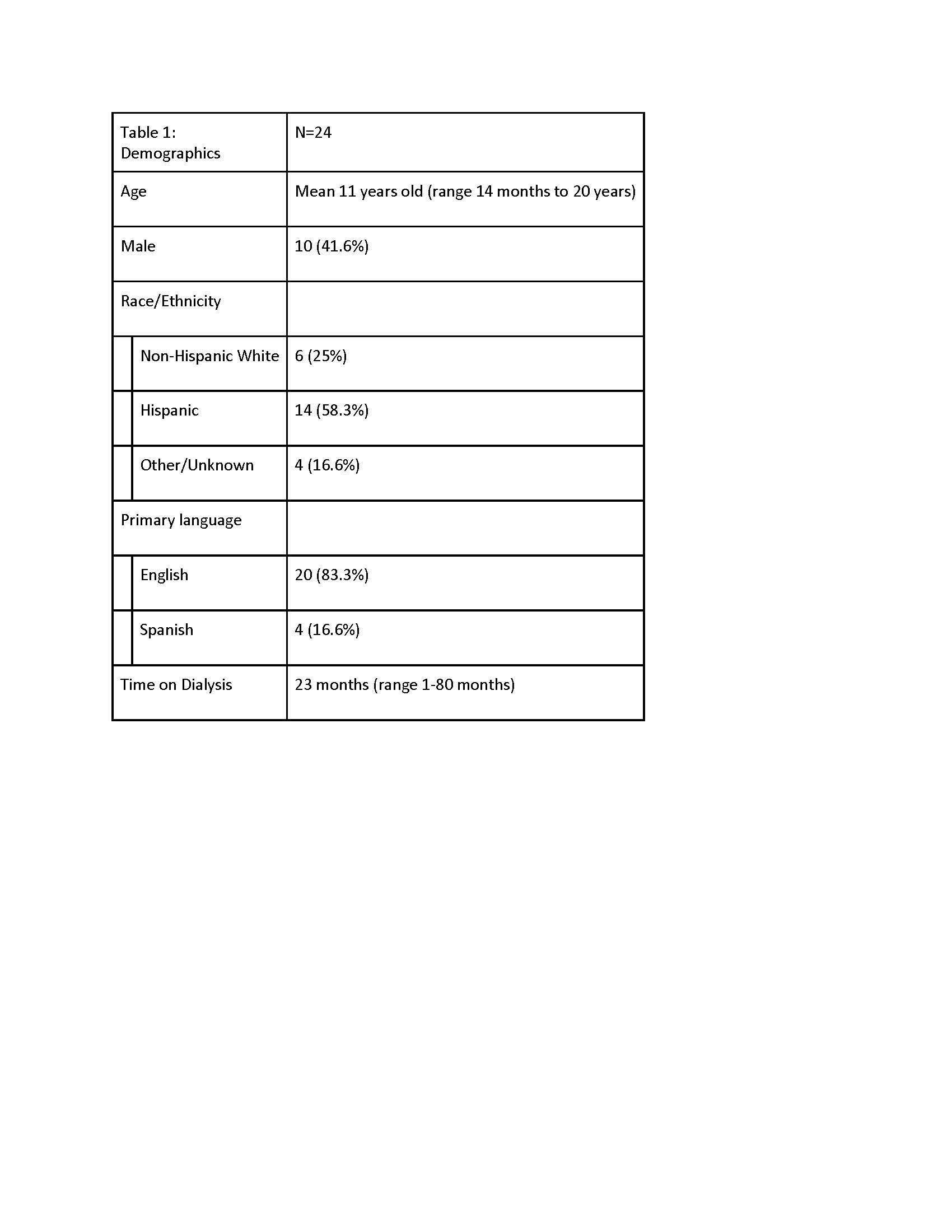Nephrology: Dialysis
Nephrology 3: Dialysis and Diversity and Equity in Kidney Health
282 - Social Determinants of Health within a Pediatric Dialysis Unit: A Quality Improvement Project Screening for Housing and Transportation Insecurity
Publication Number: 282.252

Joseph T. Myrie, MD (he/him/his)
Pediatric Nephrology Fellow
Lucile Packard Children's Hospital Stanford
Redwood City, California, United States
Presenting Author(s)
Background: Social determinants of health (SDOH), health equity, and health literacy were identified as key areas of focus for Healthy People 2030. SDOH are not readily identified in the pediatric dialysis population. Screening for SDOH is important to improve patient outcomes and overall health. Limited health literacy has been shown to correlate with lower socioeconomic status and poorer health outcomes. Previous work screening for food insecurity in our pediatric dialysis patients showed it was elevated at 62% compared to 10% in the general population. These findings raised concerns for barriers to effective use of current resources for our pediatric patients on dialysis, specifically health literacy, transportation insecurity, and housing insecurity.
To address these concerns, we initiated a quality improvement project to standardize the assessment of SDOH in pediatric dialysis patients.
Objective: To determine prevalence of health literacy, transportation insecurity, and housing insecurity among our pediatric dialysis patient population.
Design/Methods: Prospective cohort study of pediatric dialysis patients at Lucile Packard Children’s hospital. Health literacy was assessed using the Pfizer Newest Vital Sign QuestionnaireTM. Housing and transportation insecurity screeners were from Children’s HealthWatch, modified for use at our hospital. Dialysis social worker confirmed results of screeners, identified current resources, and adjusted resources as needed.
Results: Twenty-four patients were in our dialysis unit during the study period, 14 patients were on HD and 10 on PD (see tables). Of the twelve patients that screened negative for transportation insecurity, three patients were receiving gas cards. Four of the twelve patients that screened negative for housing insecurity were receiving housing assistance.
Conclusion(s):
This project brings an important perspective to SDOH research to address unmet needs in children on dialysis. This points to either inadequate resources or other barriers in successfully accessing support. This study also highlights the need for dedicated dialysis social work expertise. We incorporate a health literacy assessment in our study to document how housing insecurity and transportation insecurity are co-related and overlap with health literacy. Pediatric ESRD patients are a specifically vulnerable population and adequate SDOH screening can assess barriers to optimal care and better serve this population. We strongly recommend standardized SDOH screening for all pediatric ESRD patients.
.jpg)
